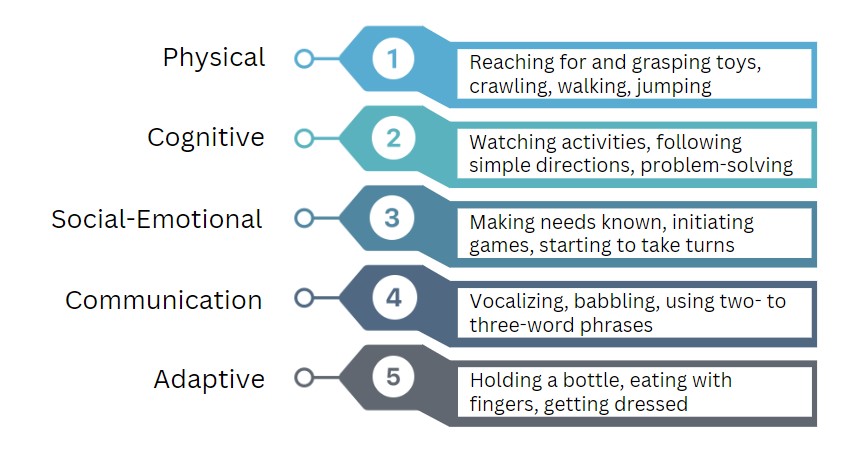Early Intervention is intended for infants and toddlers who have a developmental delay or disability.
Eligibility is determined by evaluating the child (with parental consent) to see if the child does, in fact, have a delay in development or a disability. Eligible children can receive early intervention services from birth to the third birthday. After a referral is accepted, a team of professionals uses standardized tools and observations to evaluate a child’s development in five areas:
- Physical – Reaching for and grasping toys, crawling, walking and jumping
- Cognitive – Watching activities, following simple directions, problem – solving
- Social Emotional – Making needs known, initiating games, starting to take turns
- Communication – Vocalizing, babbling, using two -to-three word phrases
- Adaptive – Holding a bottle, eating with fingers, getting dressed

After a child is evaluated, data are compared against typically developing children of the same age. If scores show a 25 percent delay overall or if the score in one developmental area is statistically 1.5 standard deviations below typical peers, then the child is eligible for an IFSP.
Some medical and developmental conditions are more likely to cause developmental delays. ESIT has a Qualifying Diagnoses List of these conditions that allows for automatic eligibility determinations. If an infant or toddler has a qualifying diagnosis, they will be enrolled in early intervention services without completing the initial eligibility evaluations.
ESIT’s A Family’s Guide to Early Intervention Services in Washington State contains more details about the evaluation process.

